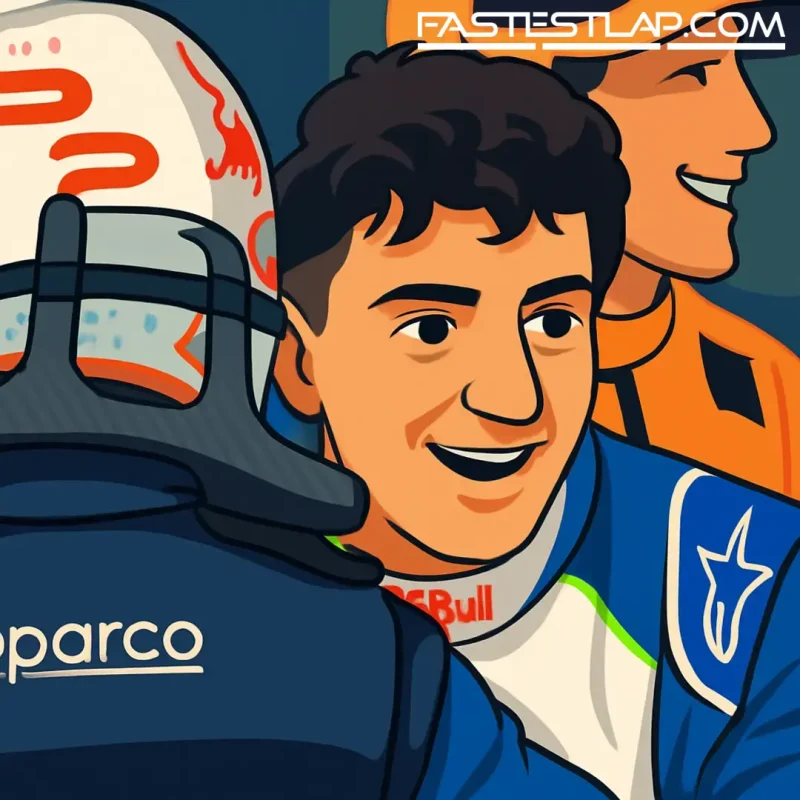Hadjar’s rise is real. The timing? That’s the tightrope.
Racing Bulls rookie Isack Hadjar has barged his way into Red Bull’s inner conversation with the sort of season that makes even the stoniest engineers grin. A first F1 podium at Zandvoort, a string of tidy points drives, and the sense he’s learning by the lap, not the weekend. Naturally, that’s triggered the obvious: will he be Max Verstappen’s teammate next year?
In the paddock the talk is loud. Red Bull has history with promoting on form and instinct, and insiders say Helmut Marko has already let Hadjar know he’s in the frame. Others insist nothing’s signed and the discussions are still live. Either way, the expectation is set: Hadjar’s on the up. The only question is whether Red Bull fast-tracks him into the senior car now or waits until F1’s 2026 rules reset.
On that, the mood among seasoned voices is clear: don’t rush a good thing.
Karun Chandhok offered the pragmatic view on Sky’s coverage. The current Red Bull is a weapon in Verstappen’s hands but notoriously twitchy for anyone trying to match his corner-entry aggression. Throwing a rookie into the final handful of races just to “get a feel” could do more harm than good when confidence is his superpower right now. Better to bank the momentum, arrive fresh next season, and—crucially—meet the team with a winter under his belt.
There’s also the 2026 wildcard. With new regulations looming, next year is the bridge to a very different era. If Red Bull’s current car has been shaped, season upon season, around Verstappen’s preferences—and it has—then 2026 is the first chance in years where both drivers start learning at zero, not with one hanging onto a moving train. For a rookie still stitching together his F1 toolkit, that matters.
Jamie Chadwick struck a similar note of caution. Yes, when a junior driver is hitting this level, you promote. That’s the point of a talent pipeline. But there’s a world of difference between the Racing Bulls and the senior Red Bull machines. Before pen gets anywhere near paper, test, verify, and understand. Put Hadjar in the big car privately and comb the data. Or put Verstappen in the junior one for a feel-check if they’re really brave. The number two seat has been a puzzle for years; Red Bull owes it to itself—and to Hadjar—to work out why.
That “why” is the heart of this. Yuki Tsunoda’s form has sagged and his seat is the one under the harshest light, but Red Bull’s second-car story predates him. Pierre Gasly, Alex Albon, Sergio Perez—good drivers all—have found life alongside Verstappen to be a profession in itself. The gap can be cruel, and the noise around it even louder. You don’t throw a 20-year-old in and hope. You build the runway.
What would the smart runway look like? Keep Hadjar at Racing Bulls through the end of the season, no late-year musical chairs. Give him extensive simulator time with the senior squad, a series of quiet tests to learn procedures, controls, and the language of the car. Let him turn up in February ready to work, not to survive. If the 2026 regs are the clean slate many expect, his adaptation curve will be steep—but at least he’ll be climbing it with a full tank and a core of self-belief intact.
None of this takes away from how impressive he’s been. Hadjar hasn’t just collected points; he’s looked like he belongs. Racecraft that’s unflustered, a light touch on tyre life, and decisions that don’t shout “rookie.” He’s handled the spotlight, too. The Zandvoort podium was a highlight, but the quieter Sundays in the midfield have probably told Red Bull even more.
And so, the balance. Red Bull has a generational benchmark in Verstappen and a precious potential partner on the other side of the garage—someone who could push him, learn from him, and, on the right days, carry the fight when the world turns chaotic. That’s worth protecting.
Promote Hadjar? It feels inevitable. Do it this instant? That’s the seduction to resist.
If Red Bull gets the sequencing right—private miles now, a clean transition later, and a 2026 programme built for two rather than one—we might finally see the second seat stop being a story and start being a strength. That’s the bet. And for once, patience might be the fastest way there.




